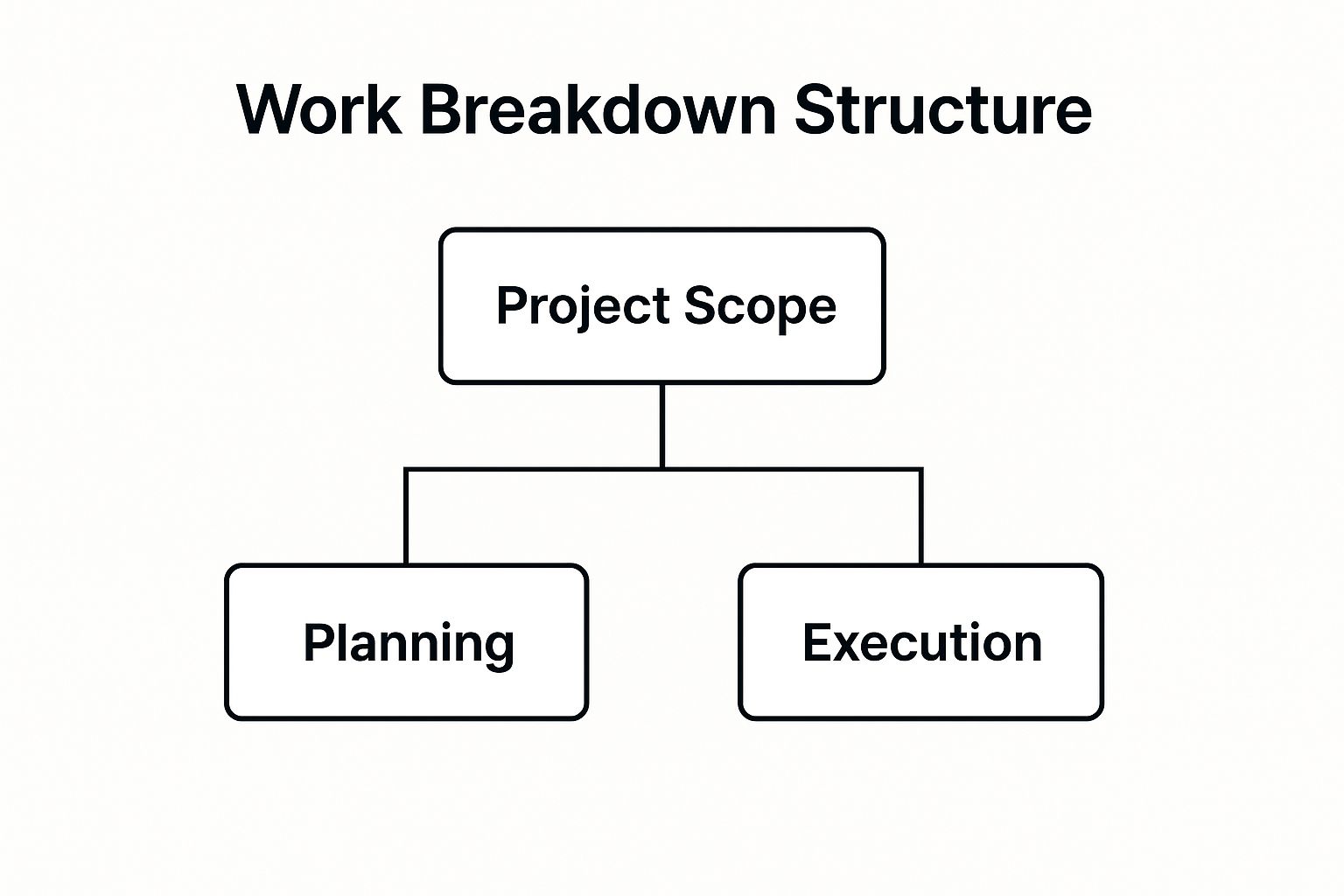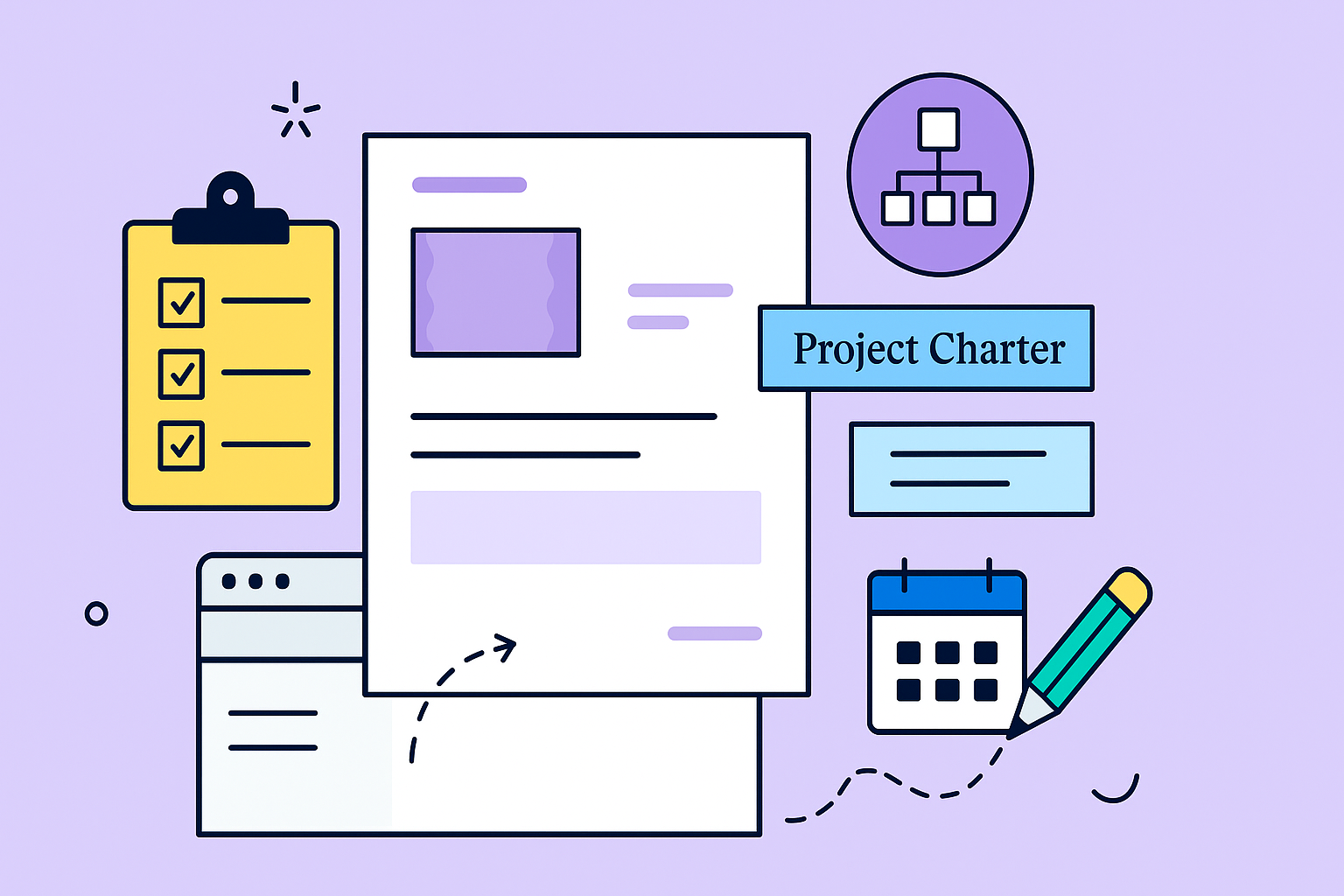Ever felt like you’re just ticking boxes on a never-ending project list? The secret to transforming that chaos into clarity isn’t more tasks-it’s mastering your deliverables. These aren’t just documents; they’re the tangible proof of progress, the cornerstones of communication, and the very blueprints for success. Forget dusty binders and pointless paperwork. A well-crafted project deliverable example is your best defense against scope creep, your tool for aligning stakeholders, and your roadmap to hitting project goals on time and on budget.
In this guide, we’re tearing down the theory and getting straight to the action. We’ll dissect 6 critical project deliverable examples, moving beyond dry definitions to reveal the behind-the-scenes strategies used by top-tier teams. We’ll show you not just what they are, but how to wield them as powerful strategic assets. You’ll learn how to prevent misunderstandings, keep everyone on the same page, and ensure your project hits its mark every time.
We will also explore how modern integration tools can streamline the creation and management of these crucial assets, turning documentation from a chore into a competitive advantage. Get ready to see project deliverables in a whole new light, not as items on a checklist, but as the real work that drives results.
1. Project Charter
Think of a Project Charter as the birth certificate for your project. It’s the formal, high-level document that officially says, “Yes, this project exists, and here’s why we’re not completely bonkers for trying to do it.” It’s a foundational project deliverable example that provides the project manager with the authority to get started, defining the project’s purpose, key objectives, and the main players involved before a single dollar is spent or a single task is assigned.

This isn’t just bureaucratic paperwork; it’s the project’s North Star. For instance, imagine the team behind NASA’s Mars Rover missions. Their project charter didn’t just say “let’s go to Mars.” It defined specific scientific objectives, like searching for signs of ancient microbial life, and established the high-level scope and success criteria. This charter was the critical document that aligned thousands of engineers, scientists, and stakeholders around a single, audacious goal.
Strategic Breakdown
A great project charter prevents the dreaded “scope creep” before it even starts. It’s a shield against stakeholders who show up mid-project with brilliant-but-distracting new ideas. By getting formal sign-off from sponsors and key stakeholders at the very beginning, you create a shared understanding of what success looks like.
Key Insight: The project charter is less about how you’ll do the work and more about what you’re doing and why it matters. It links the project directly to the organization’s strategic goals, answering the critical question, “How does this move the needle for the business?”
Actionable Takeaways
Ready to create a charter that actually works? Here’s how:
- Define Success Quantitatively: Don’t just say “improve customer satisfaction.” Instead, write “Improve Net Promoter Score (NPS) by 10 points within six months post-launch.” Measurable goals are non-negotiable.
- Keep It Lean: A charter should be a snapshot, not a novel. Aim for 1-2 pages. Anything longer probably contains implementation details that belong in the project plan, not the charter.
- List Key Stakeholders & Roles: Explicitly name the project sponsor, project manager, and key team members or departments. This clarifies who has authority and who needs to be kept in the loop.
- Reference the Business Case: Briefly summarize the business case to constantly remind everyone of the project’s value and strategic importance. This is your “why.”
2. Work Breakdown Structure (WBS)
If a Project Charter is the birth certificate, the Work Breakdown Structure (WBS) is the project’s DNA sequence. It’s a hierarchical decomposition that takes the entire, overwhelming scope of a project and breaks it down into smaller, more manageable pieces. This isn’t just a task list; it’s a project deliverable example that maps out everything the team must produce to consider the project complete, organizing it into a clear, logical hierarchy.

The infographic above illustrates the most fundamental decomposition in any project, breaking the total scope into its core phases. Think of the monumental task of building the Burj Khalifa. The WBS didn’t just list “build tower.” It broke the project into major deliverables like Foundation, Superstructure, and Façade. Each of those was then decomposed further into smaller work packages, like specific floor levels or cladding sections, ensuring no part of the colossal structure was overlooked. It provides the framework for detailed planning and control.
Strategic Breakdown
A WBS is your single source of truth for the project scope. It’s the ultimate weapon against the dreaded “I thought that was included!” conversation. By visually deconstructing the project into deliverable-oriented components, you ensure that every stakeholder understands what is in and, just as importantly, what is out of scope. It forms the basis for estimating costs, scheduling tasks, and allocating resources with stunning accuracy.
Key Insight: The WBS focuses on the what (deliverables), not the how (activities). It’s about deconstructing the final product, not listing the steps to get there. This deliverable-centric view is crucial for preventing gaps and overlaps in the project scope.
Actionable Takeaways
Ready to build a WBS that prevents chaos? Here’s how:
- Follow the 100% Rule: The sum of all the work at the lower levels must equal 100% of the work defined by the level above it. Nothing more, nothing less. This ensures complete scope definition.
- Focus on Outcomes, Not Actions: Name your WBS elements as nouns or adjectives, not verbs. For example, use “User Interface Design” instead of “Design the User Interface.” This keeps the focus on the deliverables.
- Involve Your Team: The people doing the work are the best source for breaking it down accurately. Collaborative WBS sessions improve buy-in and uncover details the project manager might miss.
- Use the 8/80 Rule: Aim for work packages (the lowest level of the WBS) that require between 8 and 80 hours of effort. This keeps tasks manageable and easy to track without getting into micromanagement.
3. Project Management Plan
If the Project Charter is the birth certificate, the Project Management Plan is the full-blown life plan. It’s the master blueprint that details how a project will be executed, monitored, controlled, and ultimately, brought to a successful close. This is the central, comprehensive project deliverable example that turns the why of the charter into the how of the actual work, integrating everything from scope and schedule to budget and risk management into one cohesive strategy document.

This isn’t just a schedule; it’s the project’s entire nervous system. Consider the Herculean task of organizing the Olympic Games. The management plan for an event like that is monumental, covering everything from venue construction schedules and security protocols to volunteer coordination and media broadcasting logistics. Every single moving part is documented, planned, and integrated. Similarly, the project plan for the California High-Speed Rail project is a massive document outlining land acquisition, environmental impact, engineering specifications, and stakeholder communication for decades of work.
Strategic Breakdown
A robust Project Management Plan is your best defense against chaos. It provides a single source of truth that all stakeholders can refer to, ensuring everyone is working from the same playbook. It’s the document that forces you to think through all the tough questions upfront: How will we handle changes? What are our quality standards? How will we communicate progress? This proactive planning is what separates well-run projects from those that spiral into disarray.
Key Insight: The Project Management Plan is a living document, not a “set it and forget it” file. It’s designed to be updated as the project evolves, providing a framework for managing change in a controlled, deliberate manner rather than reacting to it haphazardly.
Actionable Takeaways
Ready to build a plan that guides instead of gathers dust? Here’s how:
- Tailor the Complexity: A small internal project doesn’t need a 200-page plan. Scale your plan to the project’s size, risk, and complexity. A simple project might only need a high-level schedule, budget, and risk log.
- Establish a Change Control Process: Define exactly how changes to scope, schedule, or budget will be requested, reviewed, approved, and communicated. This is non-negotiable for preventing scope creep.
- Integrate Subsidiary Plans: Your overall plan should consolidate smaller plans for scope, cost, schedule, quality, communications, risk, and procurement. Efficiently managing your team’s workload within these plans is crucial. Explore strategies for resource allocation optimization to ensure your team is effective without being overloaded.
- Get Formal Sign-Off: Before execution begins, ensure key stakeholders have reviewed and approved the plan. This creates shared accountability and confirms everyone agrees on the path forward.
4. Requirements Document
If a Project Charter is the birth certificate, then the Requirements Document is the detailed DNA sequence of your project. It’s the exhaustive list that specifies exactly what the final product must do, what it must look like, and the conditions it must meet to be considered a success. This is a critical project deliverable example that translates vague stakeholder wishes into concrete, testable instructions for the development and quality assurance teams.
This document is the bridge between the high-level “why” of the charter and the detailed “how” of the project plan. Take, for example, the complex software requirements for a system like Tesla’s Autopilot. The requirements document wouldn’t just say “the car should drive itself.” It would break that down into thousands of specific, verifiable statements like, “The system shall maintain a user-selected following distance of 2 to 7 car lengths from the vehicle ahead when traveling at speeds between 18 and 90 mph.” This level of detail is non-negotiable for ensuring safety and functionality.
Strategic Breakdown
A robust Requirements Document is your ultimate defense against the dreaded, project-killing phrase: “That’s not what I meant.” It forces clarity and consensus among all parties, from the business sponsor to the software engineer. By getting formal sign-off on these detailed requirements, you create an agreed-upon source of truth that guides the entire project lifecycle, minimizing rework and managing expectations.
Key Insight: The Requirements Document is not a wish list; it’s a contract. Each requirement should be clear, concise, and most importantly, testable. If you can’t write a test to prove a requirement has been met, it’s a bad requirement.
Actionable Takeaways
Ready to build a requirements document that leaves no room for ambiguity? Here’s how:
- Prioritize Ruthlessly with MoSCoW: Not all requirements are created equal. Use the MoSCoW method (Must have, Should have, Could have, Won’t have) to categorize features. This helps you make tough decisions when time or budget constraints hit.
- Write Testable Requirements: Frame each requirement as a verifiable statement. Instead of “The system should be fast,” write “System response time for user login must be under 500 milliseconds 95% of the time.”
- Trace Everything: Maintain a traceability matrix that links each requirement back to a specific business need and forward to a design element and test case. This ensures every feature has a purpose and is thoroughly validated.
- Establish a Change Control Process: Requirements will change. Establish a formal process for how changes are requested, evaluated for impact, and approved. This prevents scope creep from derailing your timeline and budget. Getting this right often comes down to strong communication, a core part of effective stakeholder engagement strategies.
5. Test Plan and Test Results
A Test Plan is your battle strategy for quality, while the Test Results are the after-action reports from the front lines. These documents are the yin and yang of quality assurance, proving that what you built actually works as intended. The plan outlines the how, what, when, and who of testing, and the results provide the cold, hard evidence that your product is ready for the real world. This isn’t just about finding bugs; it’s a critical project deliverable example that validates all the work that came before it.
Think about the rigorous testing required for a Medtronic pacemaker. The test plan for such a device is monumental, covering everything from software logic to battery life under extreme conditions and cybersecurity vulnerabilities. The test results are not just a list of passed or failed checks; they are a formal submission to regulatory bodies like the FDA, providing documented proof that the device is safe and effective. This deliverable isn’t just about quality; in this case, it’s literally about life and death.
Strategic Breakdown
A robust test plan and its corresponding results are your ultimate defense against post-launch disasters. They are the final gatekeepers that prevent a flawed product from reaching the customer, saving you from reputational damage, costly recalls, and frantic, late-night bug-fixing sessions. These deliverables transform quality assurance from a hopeful aspiration into a documented, systematic process.
Key Insight: Testing isn’t an activity you do at the end; it’s a mindset integrated throughout the project. The test plan forces you to think like a user-and a malevolent hacker-from day one, ensuring requirements are testable and risks are identified early. For more on this, Resolution.de has a guide on quality assurance process improvement.
Actionable Takeaways
Ready to build a testing process that instills confidence? Here’s your checklist:
- Traceability is King: Every test case must be explicitly linked back to a specific requirement in the project scope or user stories. This creates a “traceability matrix” that proves you have tested everything you promised to deliver.
- Embrace Negative Testing: Don’t just test that the system works when users do the right thing. Actively try to break it. What happens when someone enters text into a number field or tries to upload a gigabyte-sized image as their profile picture? Document these “negative” scenarios.
- Document Defects Meticulously: A good bug report is a gift. It should include clear, numbered steps to reproduce the issue, screenshots or videos, and a precise statement of “what I expected to happen” versus “what actually happened.”
- Categorize Your Testing: Your plan should detail different testing types: unit tests (for individual code components), integration tests (for how components work together), system tests (for the end-to-end user experience), and User Acceptance Testing (UAT) where actual users give the final thumbs-up.
6. Project Closure Report
If a Project Charter is the birth certificate, the Project Closure Report is the official final chapter and epilogue all rolled into one. It’s the formal document that says, “We’re done, we did what we set out to do (mostly), and here’s the treasure map of lessons we learned along the way.” This critical project deliverable example doesn’t just mark the end; it formally concludes all activities, summarizes performance against objectives, and ensures the hard-won knowledge isn’t lost to the sands of time.

This isn’t just about tying up loose ends; it’s about institutional learning. Consider the closure reports from the Olympic Games. After the closing ceremonies, organizers produce exhaustive reports detailing everything from security logistics to volunteer management. These documents become the foundational playbook for the next host city, preventing them from reinventing the wheel and helping them avoid the same pitfalls. It transforms a one-time event into a legacy of operational wisdom.
Strategic Breakdown
A Project Closure Report is your organization’s memory bank. It stops teams from making the same expensive mistakes over and over again. By formally documenting outcomes, variances, and lessons learned, you provide a clear-eyed assessment of performance that is invaluable for future planning and estimating. While it’s tempting to move on to the next exciting project, skipping this step is a recipe for repeated failures. Beyond the final project closure report, understanding various project progress report examples is also crucial for managing and communicating throughout the project lifecycle.
Key Insight: The Project Closure Report’s primary value isn’t just to prove you finished, but to capture how you finished. It separates project success (hitting the goals) from project management success (hitting the budget, schedule, and quality targets) and provides actionable intelligence for both.
Actionable Takeaways
Ready to close your project with a bang, not a whimper? Here’s how:
- Conduct a “Hot Wash” Session: Gather all key stakeholders for a lessons-learned meeting while memories are still fresh. Discuss what went right, what went wrong, and what you’d do differently next time. Document everything.
- Compare Plan vs. Actual: Be brutally honest. Detail the final budget, schedule, and scope against the initial baseline approved in the project charter. Analyze the variances to understand why they happened.
- Formalize the Handover: Clearly document who is now responsible for the project’s outputs. This is a crucial part of the process, and using a structured project handover template can ensure nothing gets missed.
- Get Formal Sign-Off: The closure report isn’t complete until the project sponsor or client signs it. This signature formally releases the project team and confirms that all deliverables have been accepted.
6 Key Project Deliverables Comparison
| Document / Tool | Implementation Complexity | Resource Requirements | Expected Outcomes | Ideal Use Cases | Key Advantages |
|---|---|---|---|---|---|
| Project Charter | Low to moderate | Time from key stakeholders, formal approvals | Official project authorization, clear objectives | Project initiation, authorization | Establishes authority, stakeholder alignment |
| Work Breakdown Structure | Moderate to high | Experienced team time, detailed analysis | Clear scope definition, scope control | Complex projects needing detailed scope | Prevents scope creep, improves estimation |
| Project Management Plan | High | Significant time, cross-functional input | Comprehensive roadmap, performance baselines | Large, complex projects requiring control | Facilitates monitoring, control, stakeholder buy-in |
| Requirements Document | Moderate to high | Stakeholder engagement, elicitation sessions | Clear, testable requirements, reduces misunderstandings | Projects needing detailed specs | Provides test criteria, aligns stakeholder needs |
| Test Plan and Test Results | Moderate | Testing expertise, tools, time for execution | Quality assurance, defect reduction | Quality-critical deliverables, software | Ensures quality, compliance, and reduces defects |
| Project Closure Report | Low to moderate | Team time for review, documentation | Formal project closure, lessons learned | Project completion, knowledge transfer | Captures lessons, enables continuous improvement |
From Document to Driver: Activating Your Deliverables
We’ve just sprinted through a gauntlet of critical project documents, dissecting everything from the foundational Project Charter to the final, reflective Project Closure Report. If there’s one golden thread tying all these examples together, it’s this: a project deliverable example isn’t just a static template to copy. It’s a dynamic weapon in your project management arsenal.
The difference between a project that limps across the finish line and one that soars is often found in how these documents are treated. Are they filed away in a forgotten folder, or are they living, breathing assets that guide every decision? The most successful Operations Managers and Product Managers don’t just create deliverables; they activate them. They transform a Work Breakdown Structure from a mere list into an interactive roadmap and a Requirements Document from a dense text file into a source of truth that fuels development and testing.
Your Blueprint for Actionable Deliverables
So, how do you make the leap from document producer to outcome driver? It boils down to a few core principles we’ve seen woven through each project deliverable example.
- Connectivity is King: Your deliverables should never live in isolation. The goals in your Project Charter must directly inform your Project Management Plan. The items in your Work Breakdown Structure should map perfectly to your Requirements Document, which in turn dictates your Test Plan. This creates a powerful chain of logic that prevents scope creep and ensures everyone is pulling in the same direction.
- Visibility Breeds Accountability: When deliverables are accessible and transparent, they become tools of alignment. A cross-functional team that can easily see the project plan and its progress is a team that can self-correct and collaborate effectively. Hiding these documents away creates silos and confusion.
- Treat Them as Living Assets: The project landscape is constantly shifting. A “set it and forget it” approach to your deliverables is a recipe for disaster. Revisit your project plan regularly, update your requirements as you gather new insights, and use your test results to inform future sprints.
Key Strategic Insight: The true value of any project deliverable isn’t the document itself, but the clarity, alignment, and control it provides. Your goal is to make these documents so seamlessly integrated into your workflow that they become invisible engines driving progress, not bureaucratic hurdles to overcome.
Mastering this strategic approach is what separates good project managers from great ones. It’s how you move beyond simply managing tasks and start orchestrating success. By embedding these practices, you ensure that every document you produce serves a clear purpose, connects to the bigger picture, and actively empowers your team to deliver outstanding results. Your project’s success story starts not just with a great idea, but with a great set of interconnected, actionable deliverables.
Ready to stop chasing down updates and start connecting your deliverables automatically? See how you can link your project plans in monday.com directly to your development work in Jira. Explore the integration tools from resolution Reichert Network Solutions GmbH to create a seamless, single source of truth for your entire team.
